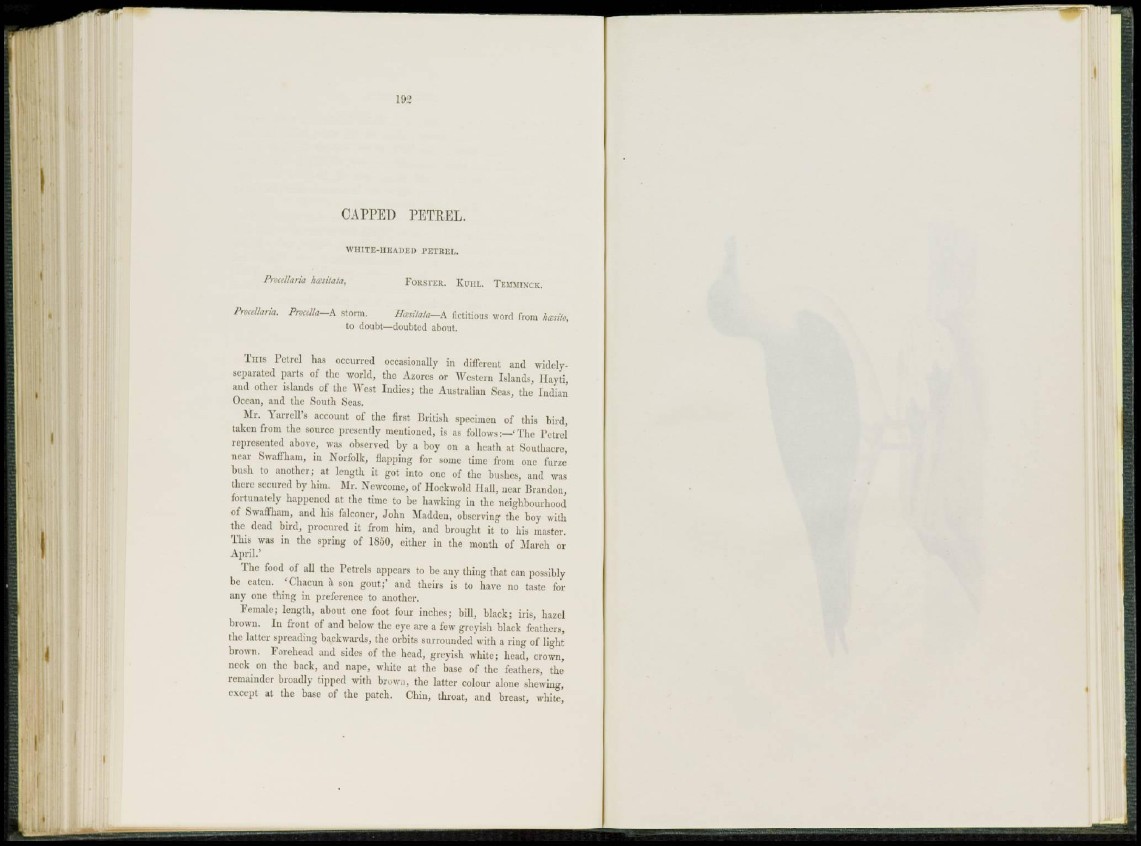
C A P P E D P E T R E L.
WHITE-HEADED PETREL.
Proceliaria hasitata, FOKSTKR. KUHL. TEMMINCK.
ProcelUiria. Procdla—A storm. Htrsiiala—A fictitious word from hccsilo,
to doubt—doubted about.
T H I S Petrel has occurred occasionally in different and widelyseparated,
parts of the world, the Azores or Western Islands, llayti,
and other islands of the AVest Indies; the Australian Seas, the Indian
Ocean, and the South Seas.
Mr. Yarrell's account of the first British specimen of this bird,
taken from the source presently mentioned, is as follows:—'The Petrel
represented above, was observed by a boy on a heath at Southacre,
near Swaffham, in Norfolk, flapping for some time from one furze
bush to another; at length it got into one of the bushes, and was
there secured by him. Mr. Ncwcoinc, of Hockwold Hall, near Brandon,
fortunately happened at the time to be hawking in the neighbourhood
of Swaffham, and his falconer, John Madden, observing the boy with
the dead bird, procured it from him, and brought it to his master.
This was in the spring of 1850, either in the month of March or
April.'
The food of all the Petrels appears to be any thing that can possibly
be eaten. 'Ohacun it son gout;' and theirs is to have no taste for
any one thing in preference to another.
Female; length, about one foot four inches; bill, black; iris, hazel
brown. In front of and below the eye are a few greyish black feathers,
the latter spreading backwards, the orbits surrounded with a ring of light
brown. Forehead and sides of the head, greyish white; head, crown,
neck on the back, and nape, white at the base of the feathers, the
remainder broadly tipped with brown, the latter colour alone shewing,
except at the base of the patch. Chin, throat, and breast, white,